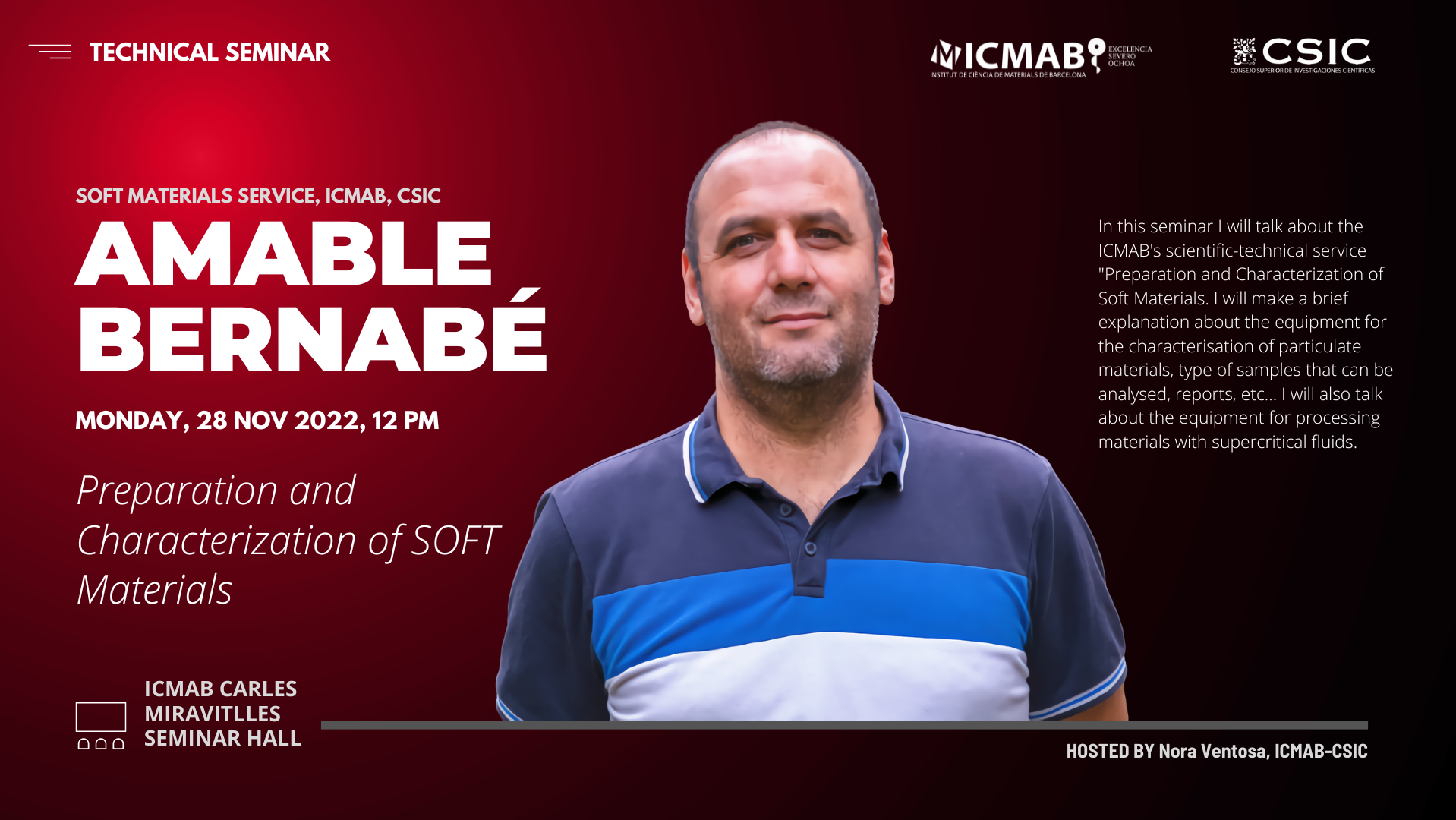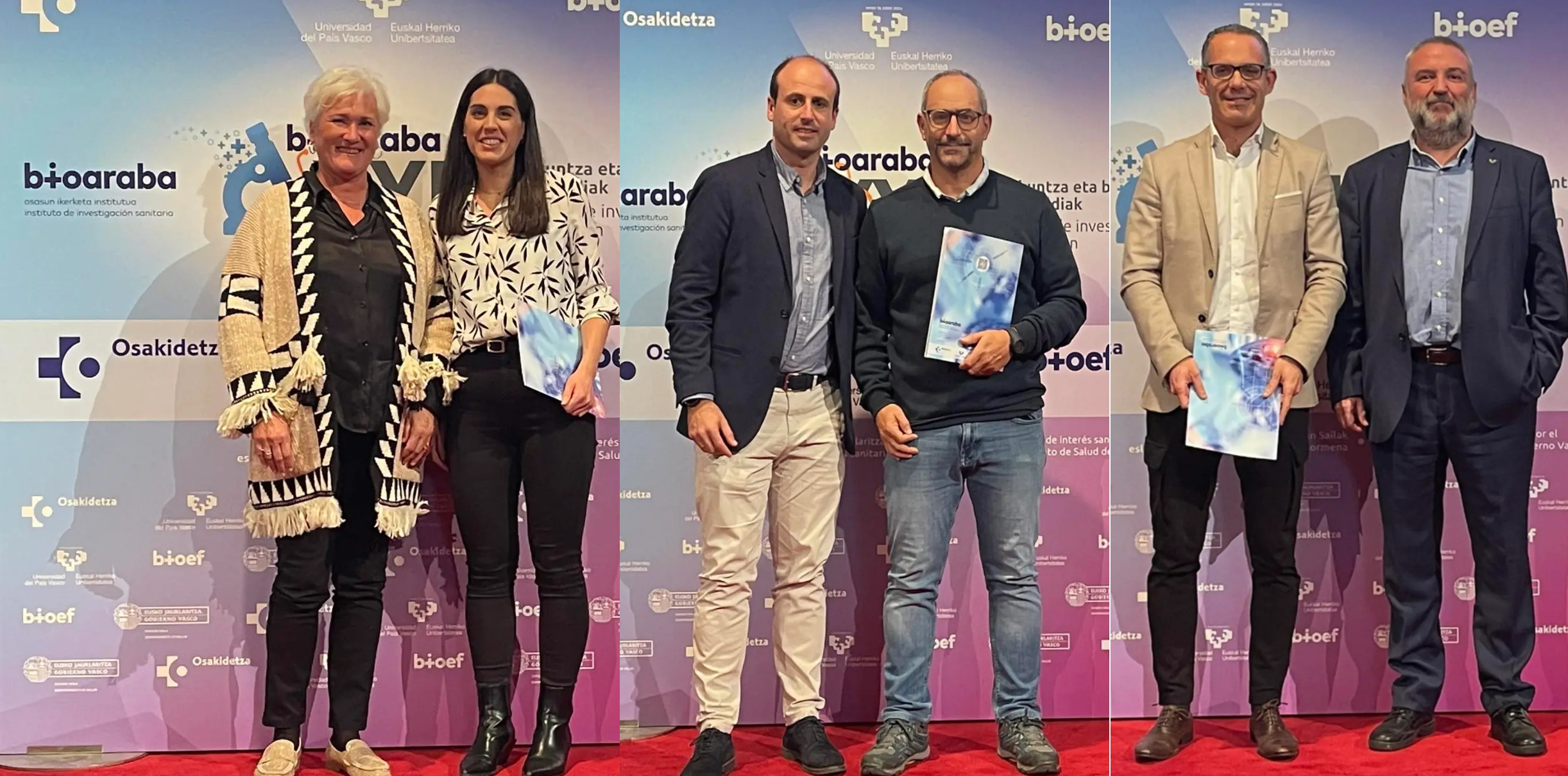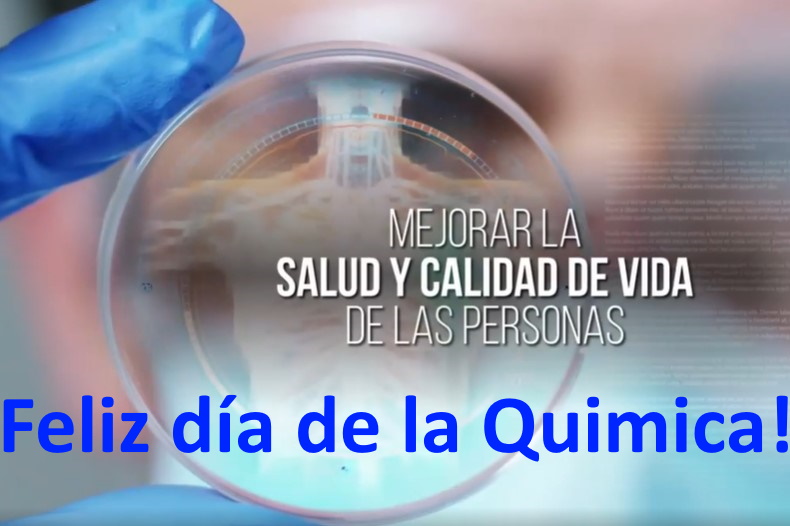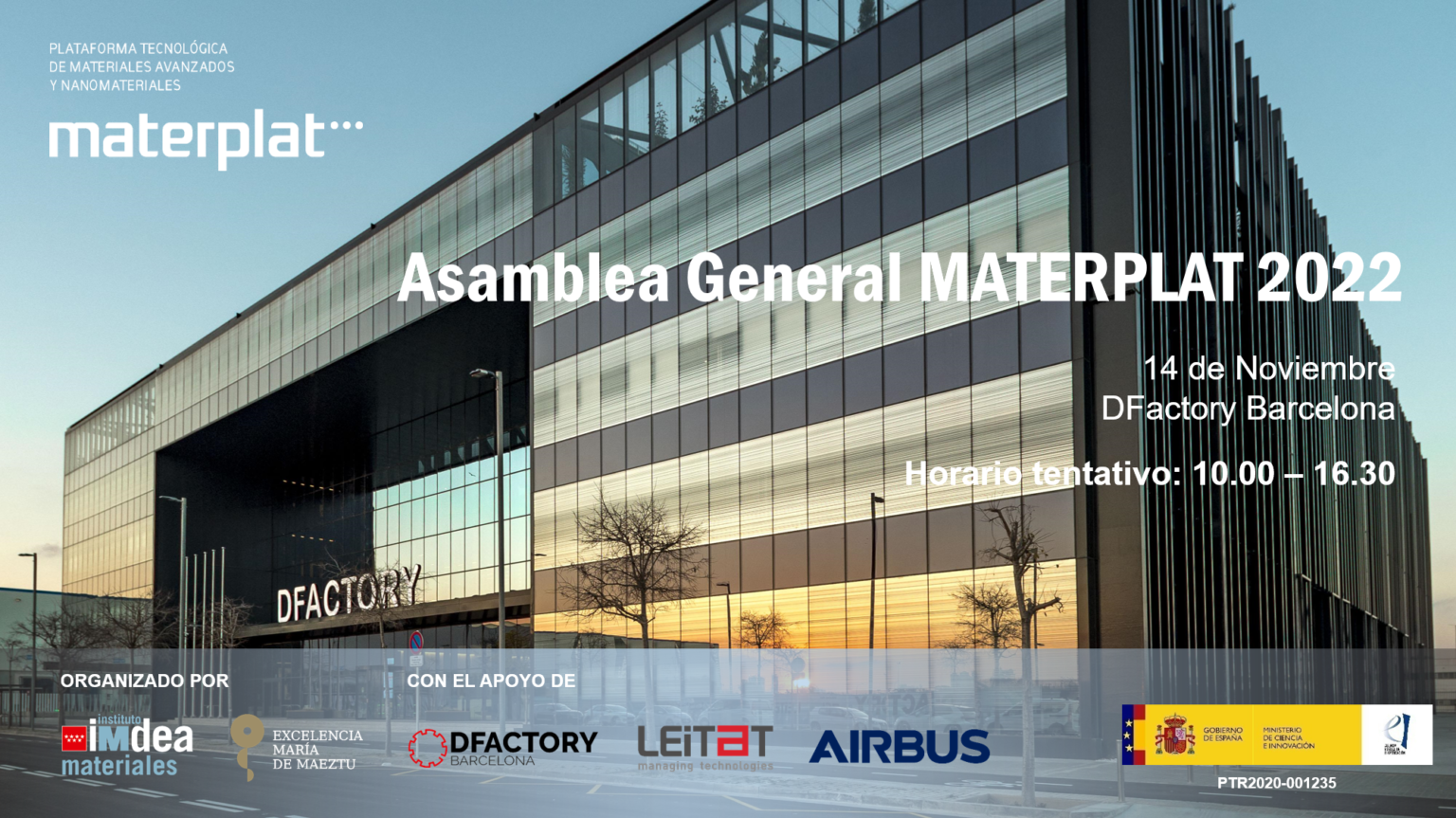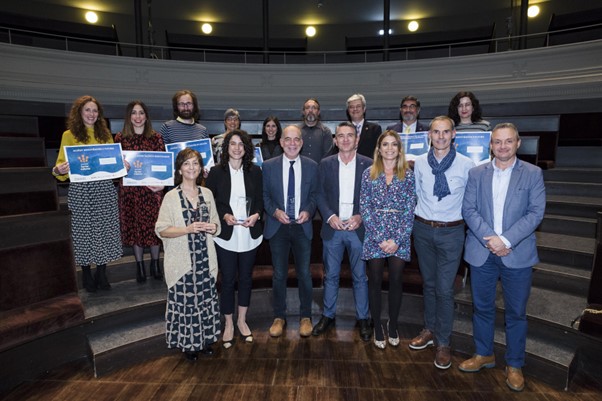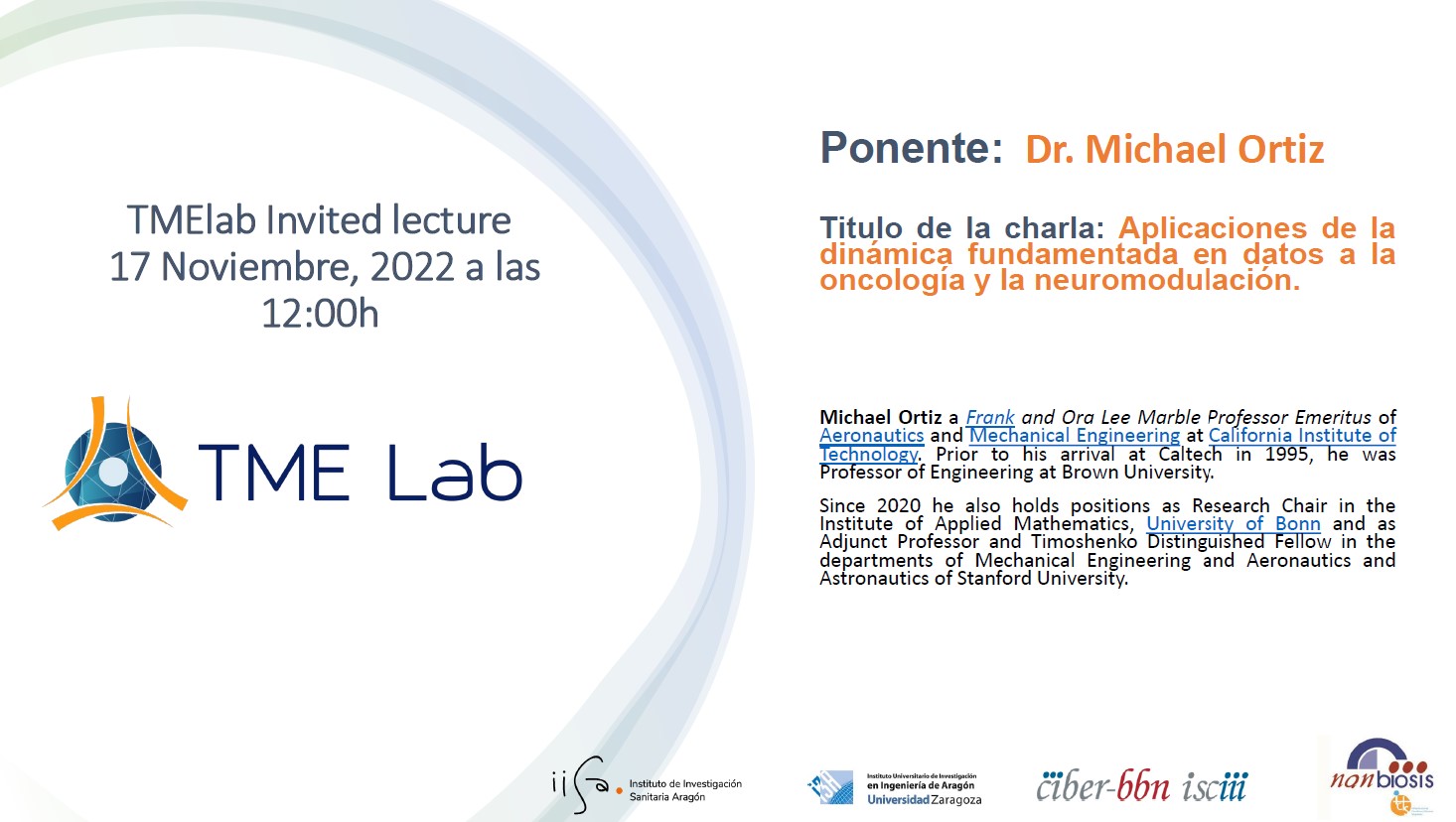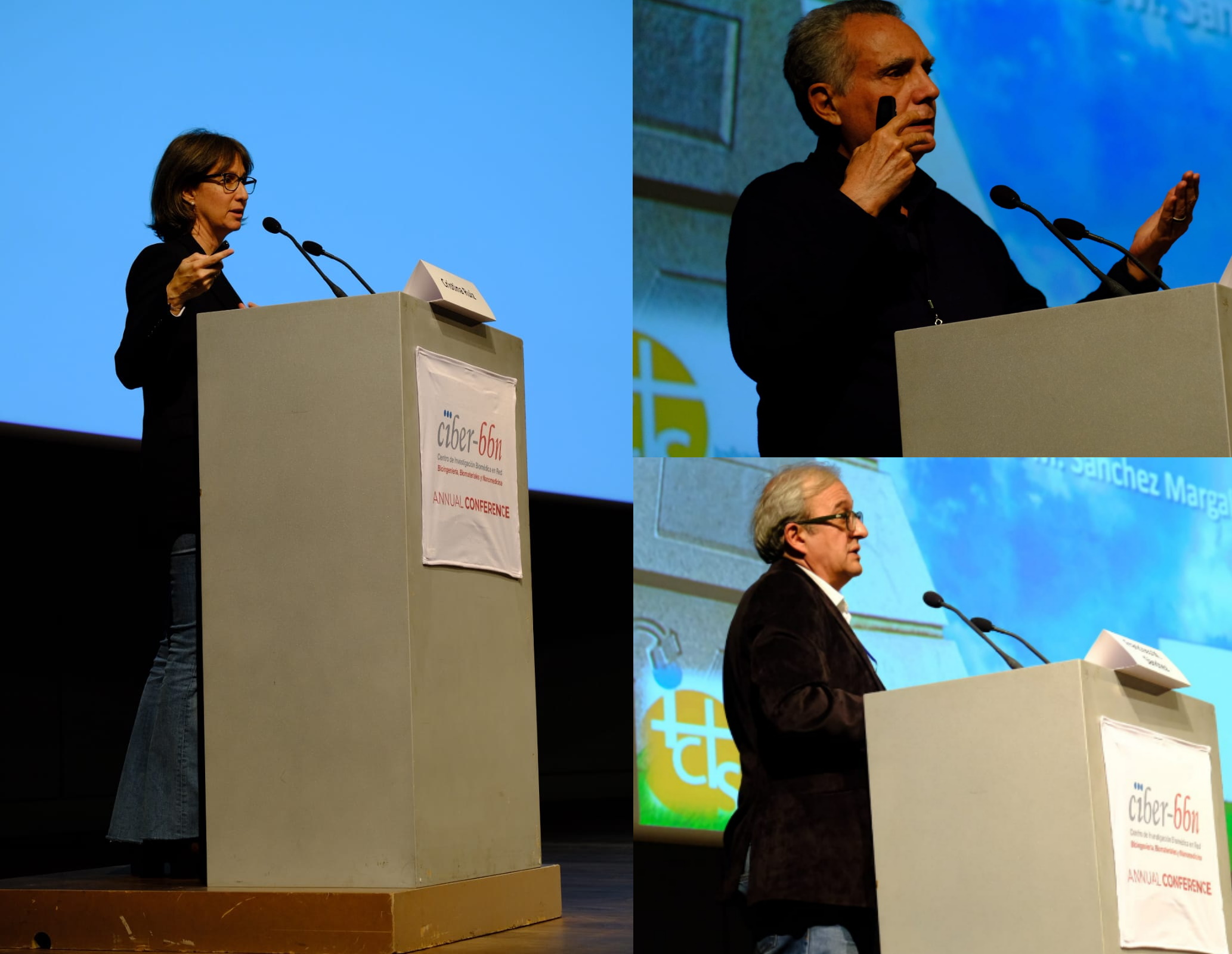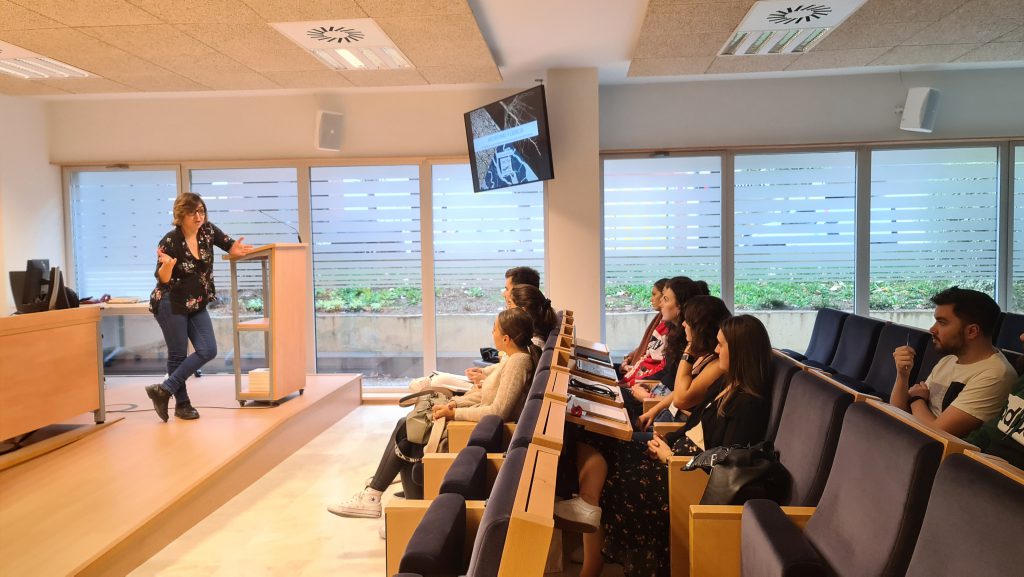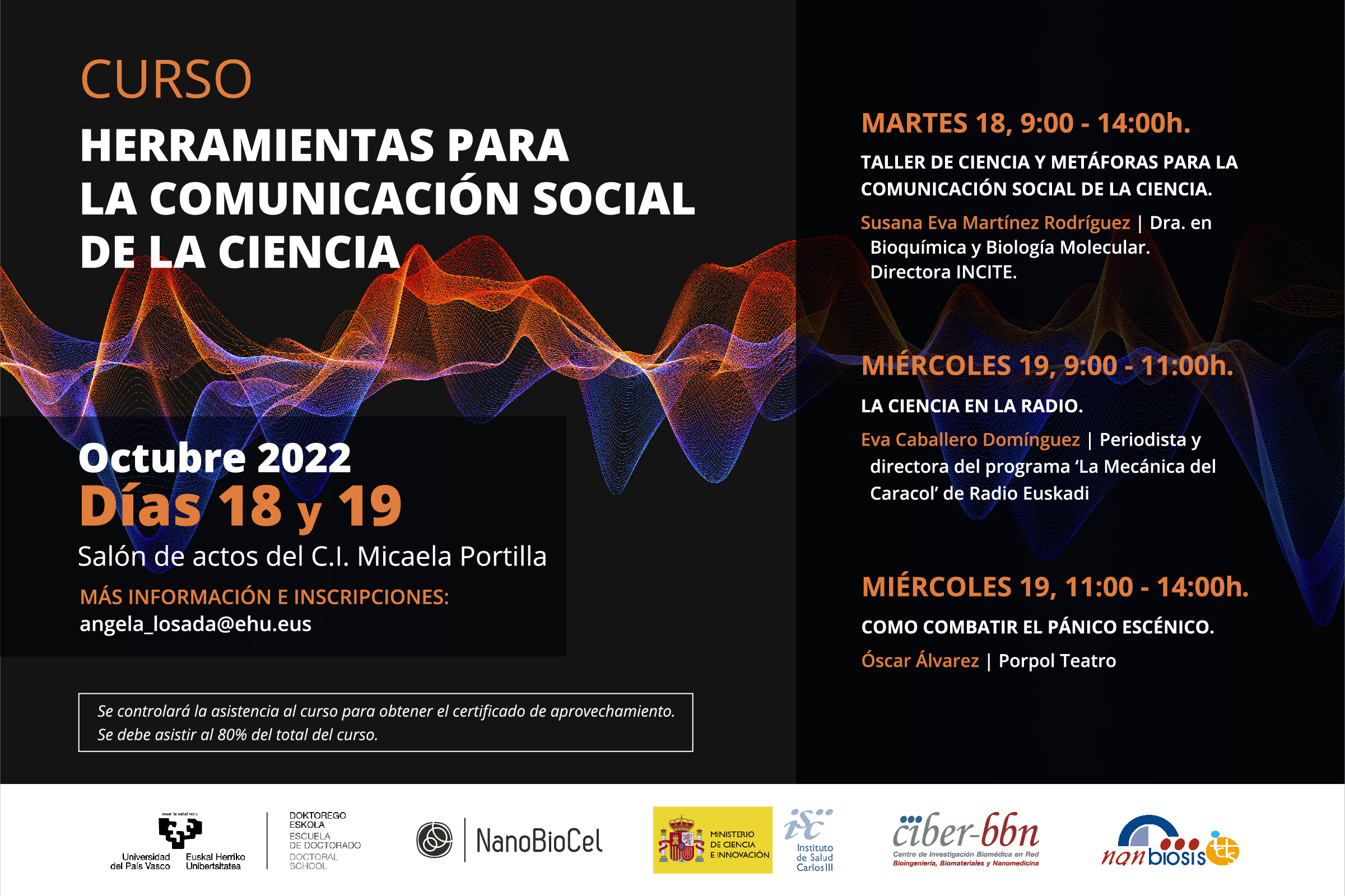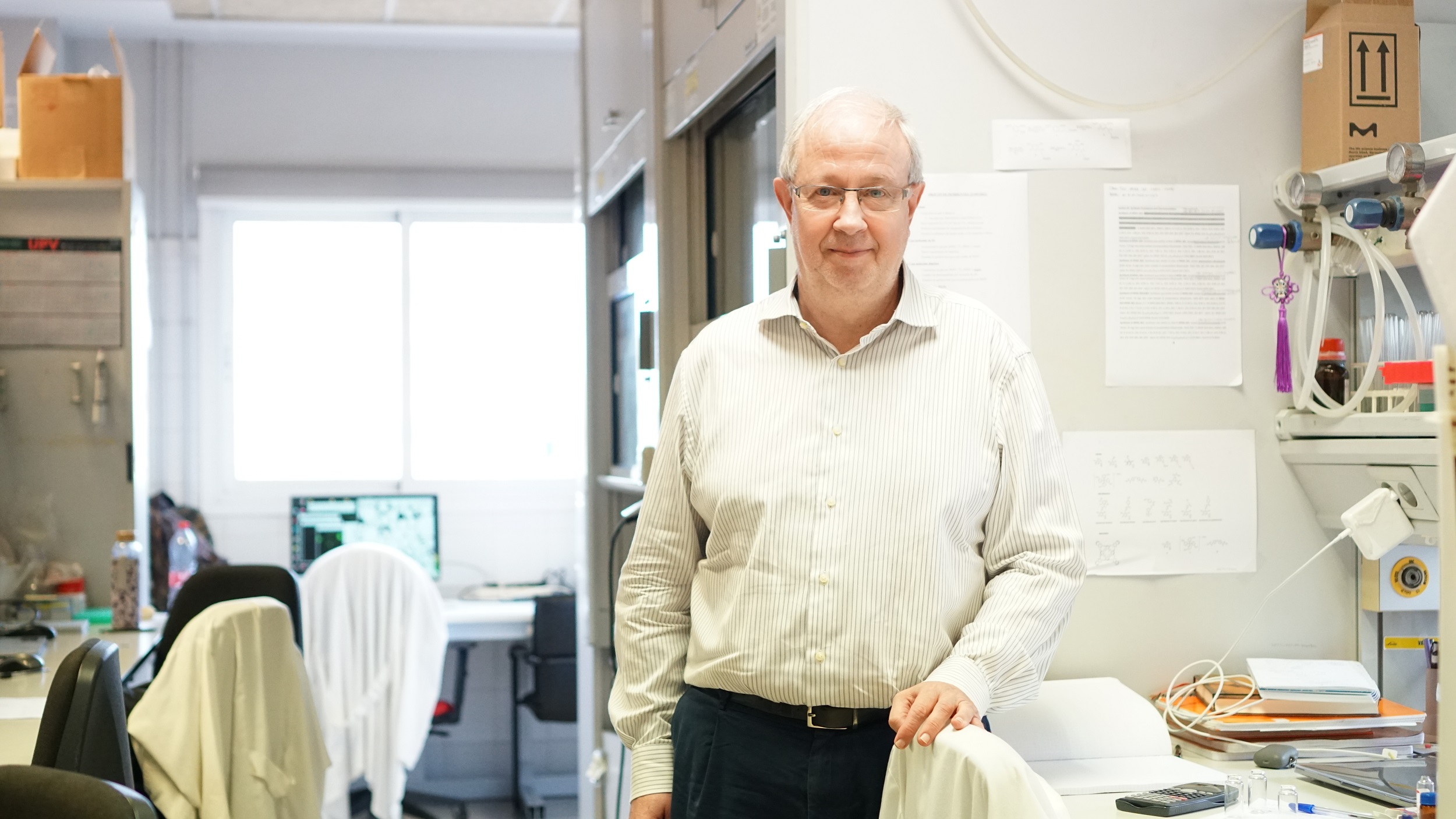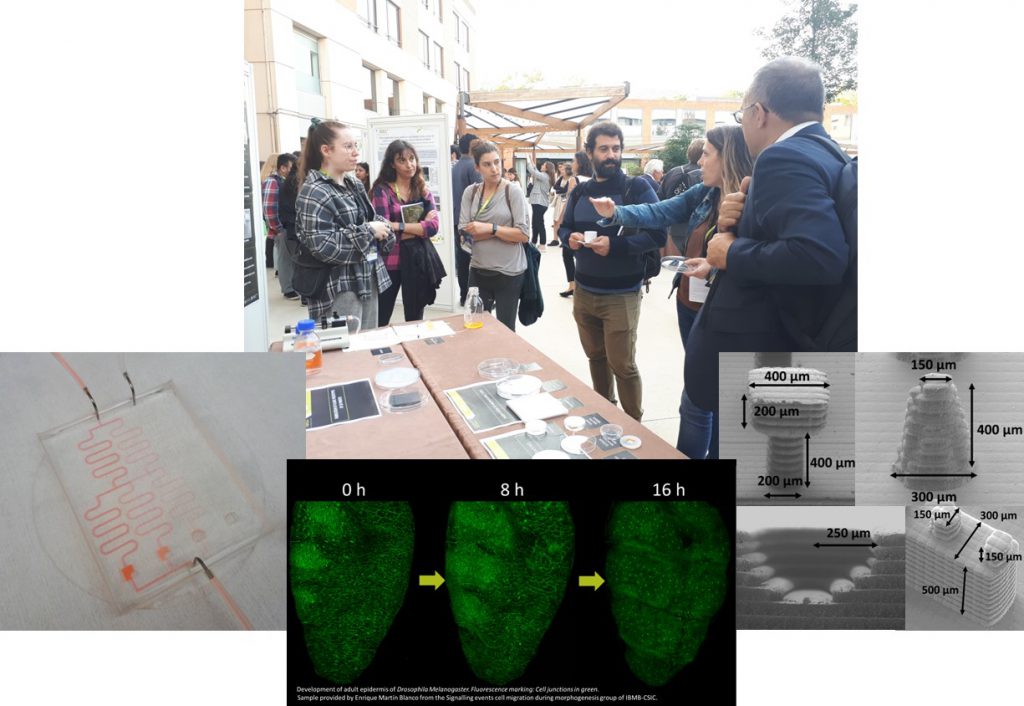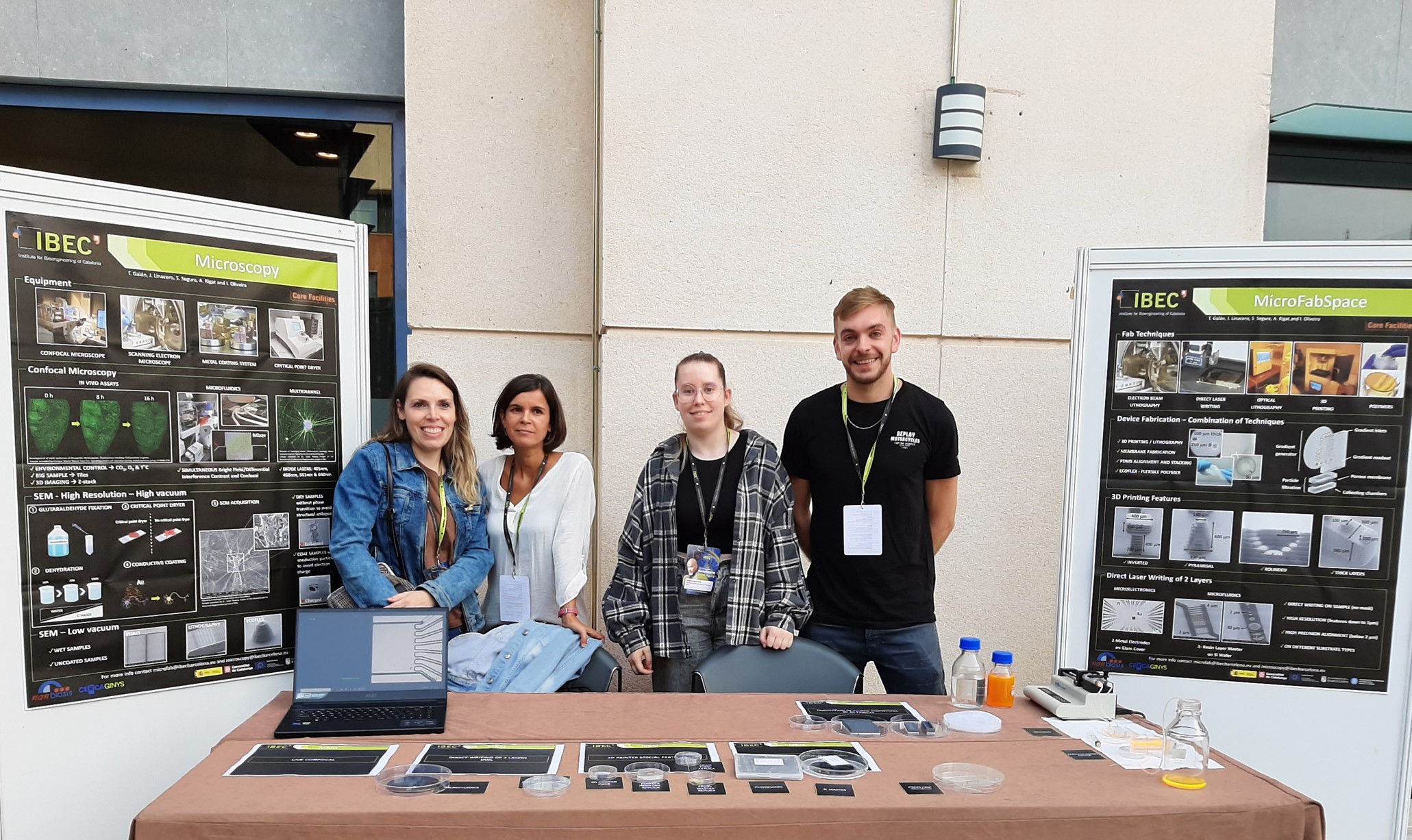“Preparation and characterization of SOFT Materials” Technical Seminar
Amable Bernabé, Tecnical Coordinator of NANBIOSIS U6: Biomaterial Processing and Nanostructuring Unit of CIBER-BBN and ICMAB-CSIC is giving a seminar on Preparation and Characterization of SOFT Materials.
The seminar will tame place on Monday, 28 November 2020, at 12 PM at ICMAB in the Carles Miravitlles Seminar Hall,
” I will make a brief explanation about the equipment for the characterisation of particulate materials, type of samples that can be analysed, reports, etc… I will also talk about the equipment for processing materials with C” -explains Amable Bernabé.
Amable Bernabé joined the ICMAB-CSIC in 2004 as a research assistant working at the Spectroscopic Service. Two years after, in 2006, he was promoted to technical coordinator of the CIBER-BBN and ICMAB-CSIC research group Nanomol , and in 2008, he started as the technical manager of the Soft Materials characterization lab. Since 2009, he was appointed a permanent research technician at CSIC. Since the creation of the NANBIOSIS and its aproval as ICTS (Scientific and Tecnical Unique Infraestructure by the Spanish Government, Amable is the Tecnical Coordinator of the unit 6 of NANBIOSIS. His research interest is focused on the study and characterization of the physico-chemical properties of nanomaterials, particularly on particle size and shape, particle concentration, Z-Potential and stability studies.
Description of the SOFT Service: The SOFT Materials Service is scientific and technical service of the Institute of Materials Science of Barcelona (CSIC) and the Unit 6 of the ICTS-NANBIOSIS. The mission of this facility is the large-scale production and characterization of molecular biomaterials of therapeutic or biomedical interest, with controlled micro-, nano- and supramolecular structure. This unit is composed of the equipment and the experienced personnel to develop and apply efficient, robust and green technologies based on the use of supercritical fluids, such as compressed CO2
